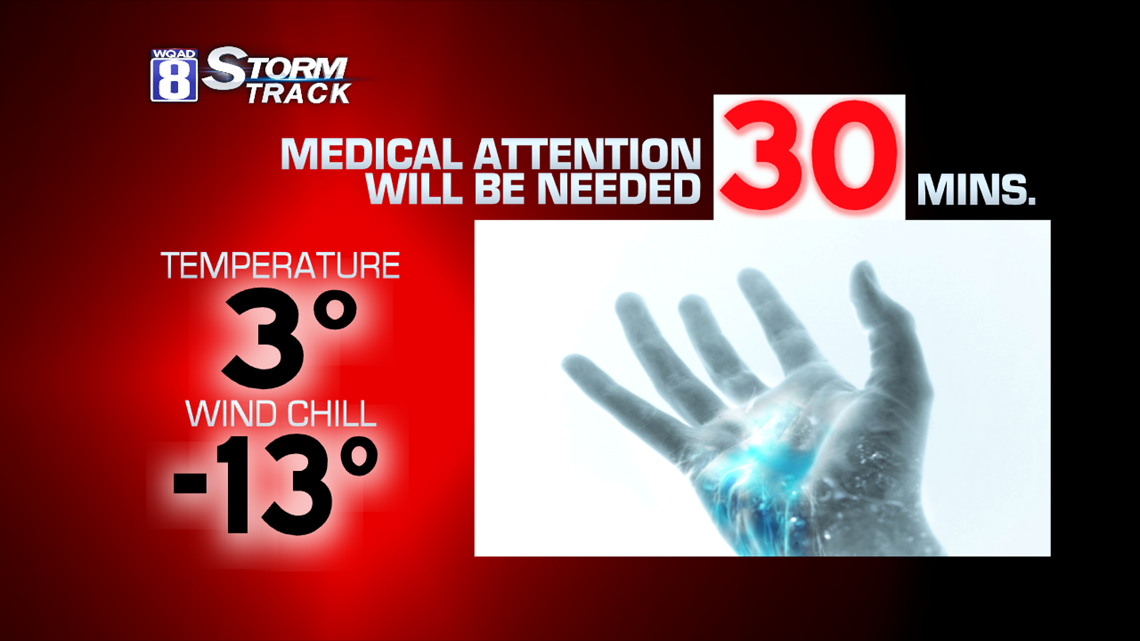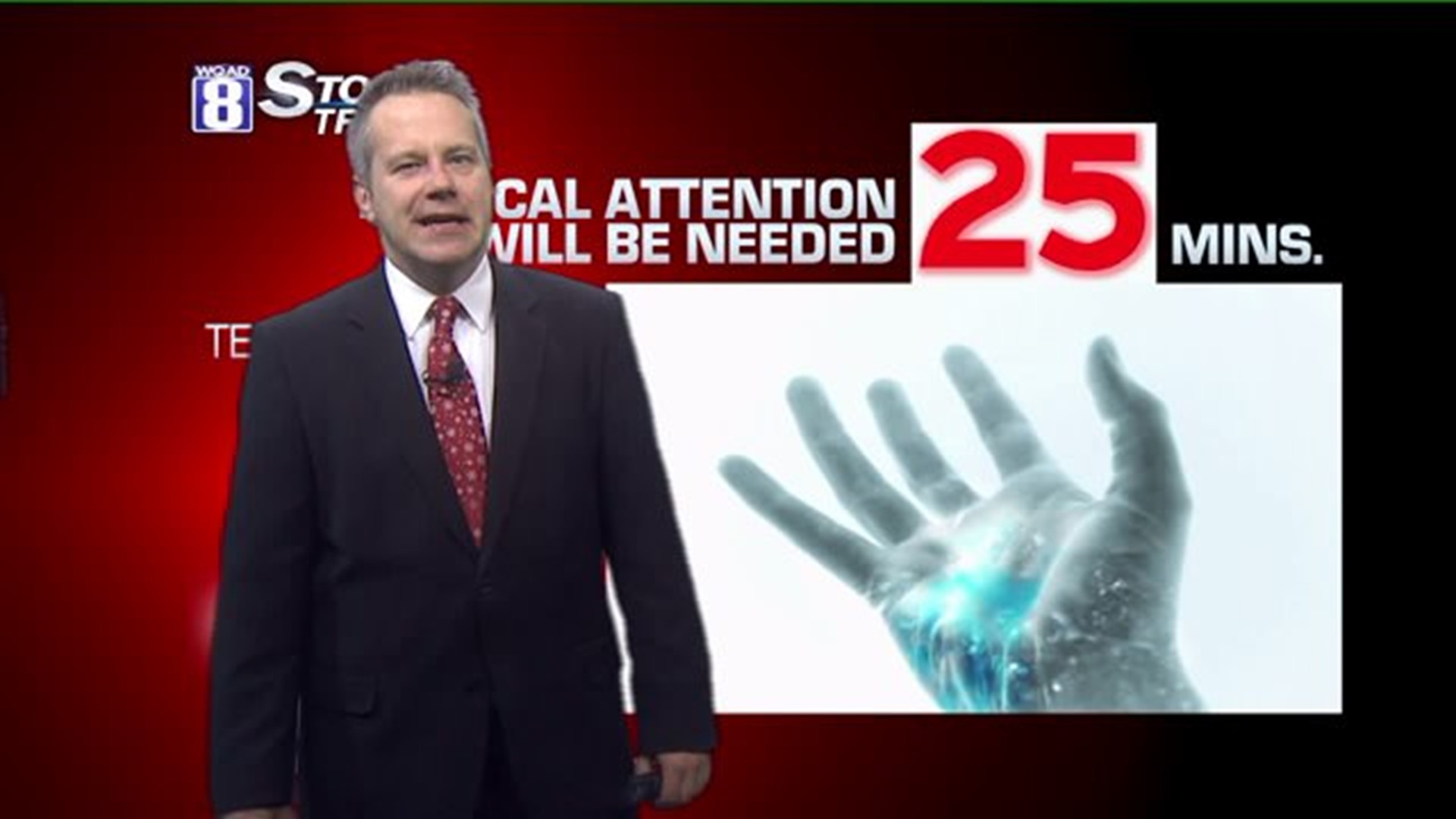Temperatures are down near zero early this Thursday morning. On top of that, the wind is still blowing in from the northeast at 10-20 mph. This has caused some wind chills to dip to -25. Worst places for the wind chill are in Eastern Iowa from Davenport, north to Dubuque.
This level of cold can cause frostbite in as little as 20-30 minutes. Without dressing in layers, people are jeopardizing their skin and health.
Here's why frostbite is so dangerous. With wind chill values to -20, it is very hard for your blood to keep tissue in your extremities warm. Fingers and toes are the most commonly affected areas of the body susceptible to frostbite. According to the Mayo Clinic, there are three different types of frostbite.
- Frostnip. The first stage of frostbite is frostnip. With this mild form of frostbite, your skin pales or turns red and feels very cold. Continued exposure leads to prickling and numbness in the affected area. As your skin warms, you may feel pain and tingling. Frostnip doesn't permanently damage the skin.
- Superficial frostbite. The second stage of frostbite appears as reddened skin that turns white or pale. The skin may remain soft, but some ice crystals may form in the tissue. Your skin may begin to feel warm — a sign of serious skin involvement. If you treat frostbite with rewarming at this stage, the surface of your skin may appear mottled, blue or purple. And you may notice stinging, burning and swelling. A fluid-filled blister may appear 24 to 36 hours after rewarming the skin.
- Severe (deep) frostbite. As frostbite progresses, it affects all layers of the skin, including the tissues that lie below. You may experience numbness, losing all sensation of cold, pain or discomfort in the affected area. Joints or muscles may no longer work. Large blisters form 24 to 48 hours after rewarming. Afterward, the area turns black and hard as the tissue dies.
If your child is headed to the bus stop and they normally are picked up in 10 minutes, ask yourself "What if the bus is late?" If you're headed out on your morning commute and you're normally not outside more than a minute or two, think "What if today's the day my car breaks down or if there's a fender-bender?" It's important to have proper clothes to keep you warm, just in case.
-Meteorologist Eric Sorensen



